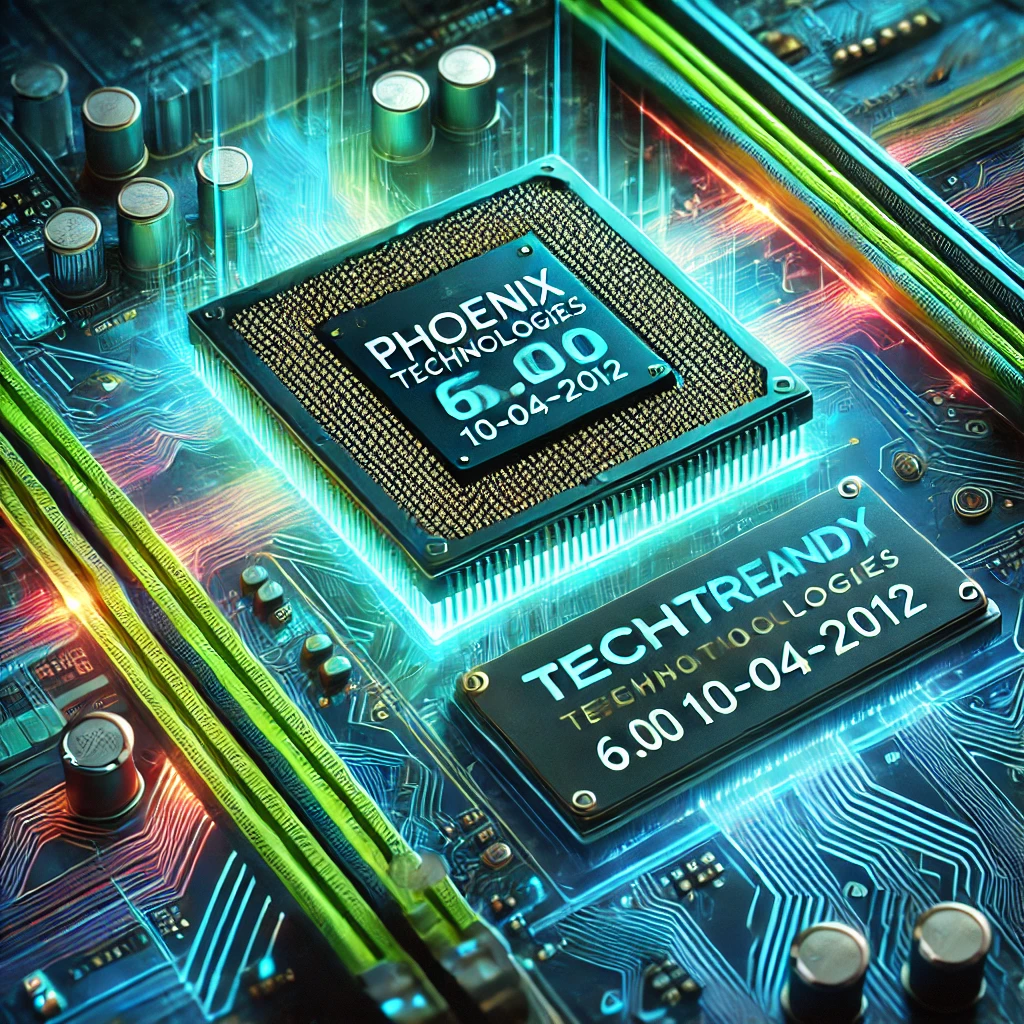Phoenix Technologies 6.00 10-04-2012: Unlocking the Legacy of Revolutionary Firmware
In the constantly evolving landscape of technology, certain innovations stand out as transformative milestones. One such innovation is Phoenix Technologies 6.00 10-04-2012, a BIOS version that holds an iconic status in the world of firmware. Known for its compatibility, reliability, and forward-thinking features, this BIOS has maintained its relevance, even more than a decade after its release.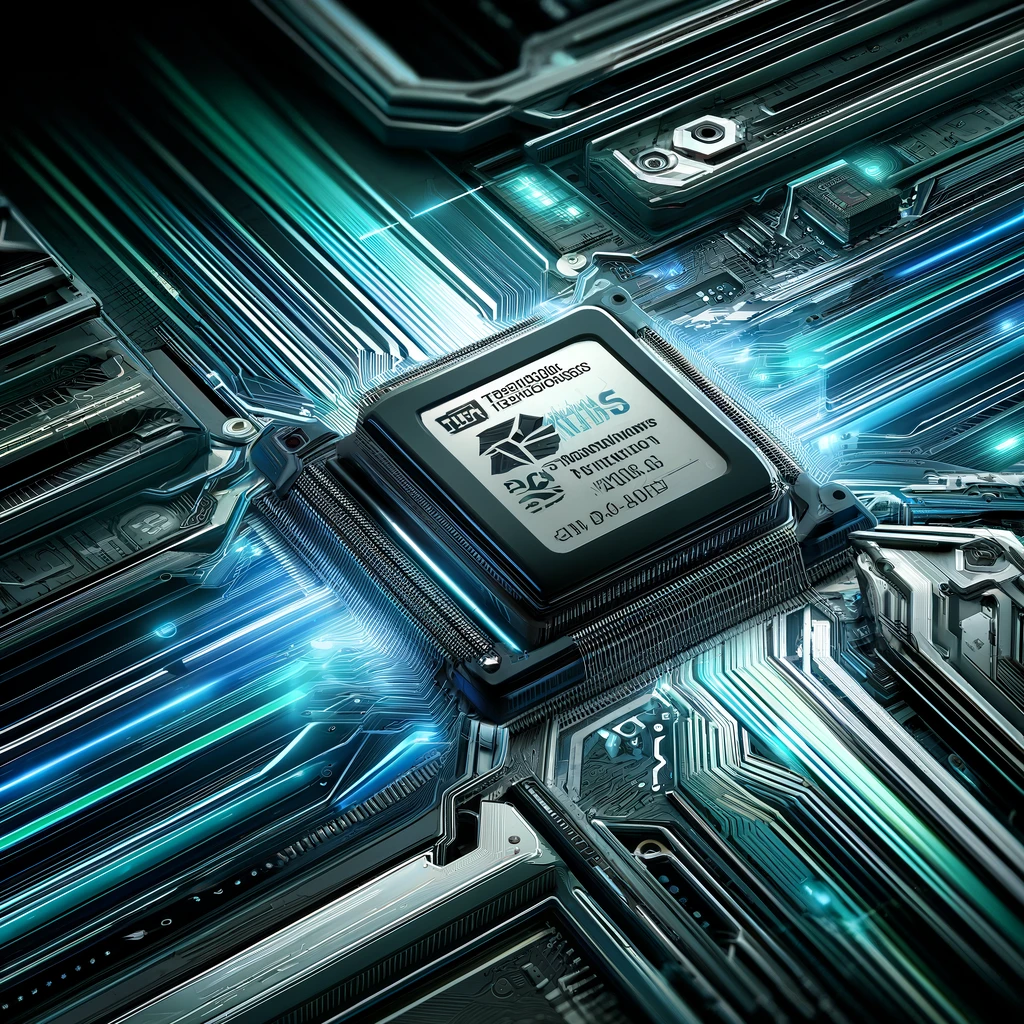
This comprehensive guide delves into the world of Phoenix Technologies, unraveling its importance, features, and lasting legacy in the realm of computing.
Understanding Phoenix Technologies and BIOS
Before diving into the details of Phoenix Technologies 6.00 10-04-2012, it’s essential to understand what BIOS is and why it plays a critical role in computing.
The BIOS (Basic Input/Output System) is a low-level software embedded in a computer’s motherboard. It initializes hardware components, performs system diagnostics, and hands over control to the operating system during boot-up. Essentially, the BIOS acts as a bridge between the hardware and software layers of a computer.
Phoenix Technologies has been a pioneer in BIOS development for decades. Their solutions are renowned for providing stability, speed, and compatibility across a wide range of devices. The release of Phoenix Technologies 6.00 10-04-2012 was a landmark moment, showcasing their expertise in meeting the demands of bot
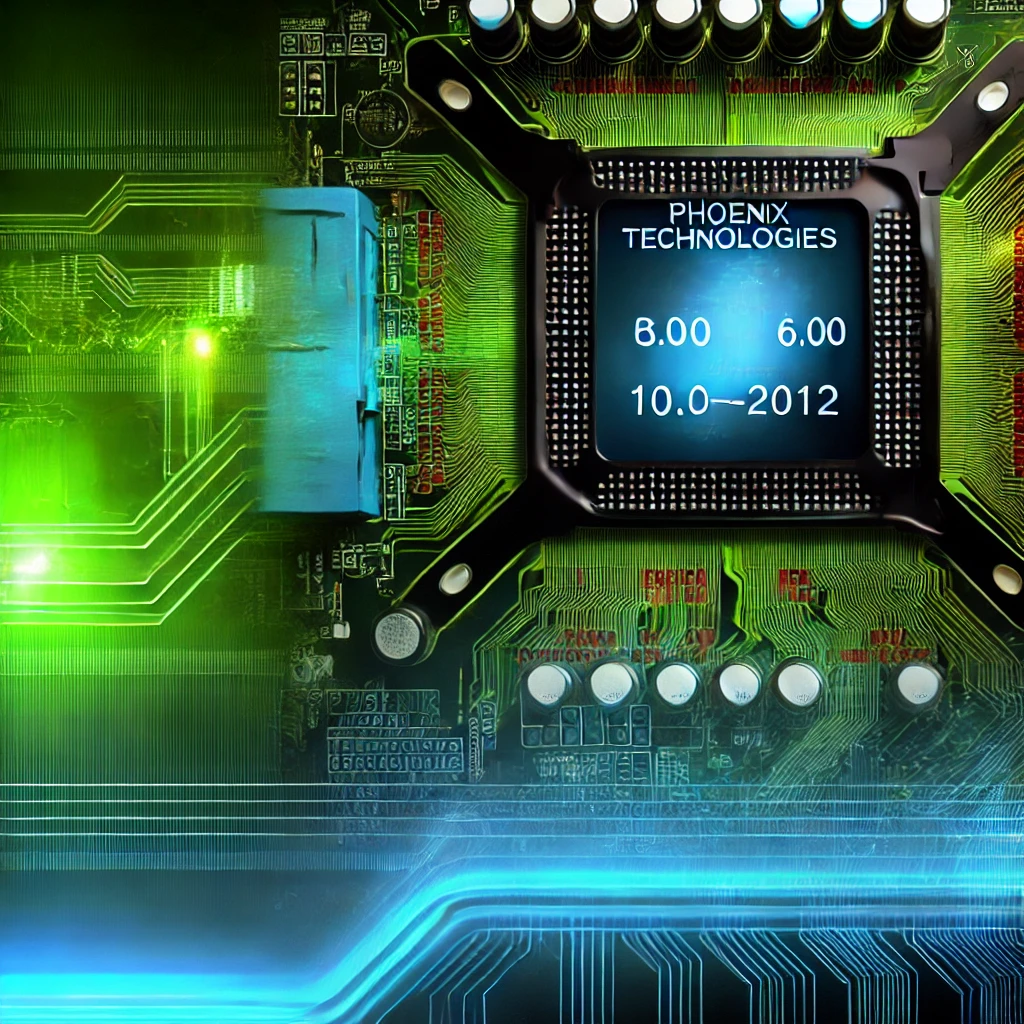
h legacy and modern systems.
A Closer Look at Phoenix Technologies
Released on October 4, 2012, Phoenix Technologies represents one of the company’s most significant BIOS updates. At the time, the computing world was transitioning from traditional hardware setups to modern innovations like solid-state drives (SSDs) and advanced graphics processing units (GPUs). This BIOS was designed to bridge this gap, ensuring seamless performance across a diverse range of systems.
Key Features
- Optimized System Compatibility
Phoenix Technologies was engineered to support a wide variety of hardware configurations. Whether it was a high-performance gaming PC or a robust enterprise server, this BIOS ensured smooth operation by harmonizing the interaction between components. - Faster Boot Speeds
One of the standout features of Phoenix Technologies was its ability to drastically improve boot times. By optimizing firmware code and introducing efficient initialization processes, this version offered users a quicker startup experience, enhancing productivity. - Comprehensive Legacy Support
Unlike many contemporary BIOS solutions that phased out support for older hardware, Phoenix Technologies 6.00 10-04-2012 remained committed to legacy systems. This made it an indispensable tool for industries and users reliant on older yet mission-critical hardware. - Enhanced Security Features
As cybersecurity threats grew more sophisticated, Phoenix Technologies 6.00 10-04-2012 implemented several security measures to protect systems at the firmware level. These included features to prevent unauthorized access and minimize vulnerabilities. - Advanced Power Management
Efficient power management became a growing concern in 2012 as energy consumption increased with more powerful hardware. Phoenix Technologies 6.00 10-04-2012 introduced energy-saving features, making it environmentally conscious while extending the lifespan of system components.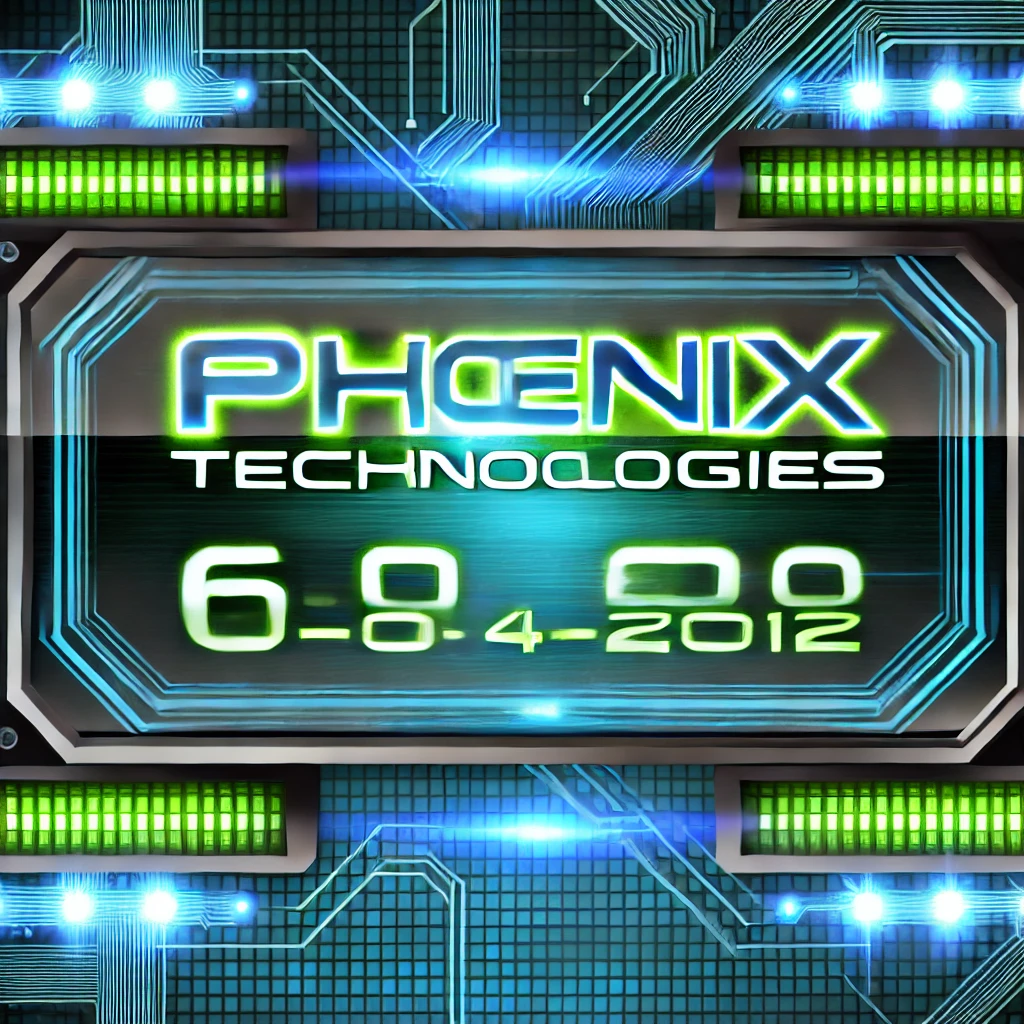
The Impact of Phoenix Technologies on Computing
A Bridge Between Generations
At the time of its release, Phoenix Technologies 6.00 10-04-2012 played a crucial role in bridging the gap between older hardware and emerging innovations. Systems that relied on traditional HDDs, legacy ports, and older processors found a new lease on life with this BIOS.
Conversely, the firmware’s compatibility with modern technologies ensured that users didn’t feel left behind as they adopted newer components like SSDs, multi-core CPUs, and high-resolution displays.
Enterprise Adoption
Enterprises, in particular, found Phoenix Technologies 6.00 10-04-2012 invaluable. Its stability and robustness made it the firmware of choice for mission-critical systems, including servers, medical devices, and industrial machinery.
Prolonged Relevance
Even in 2024, systems running Phoenix Technologies 6.00 10-04-2012 are still operational in specialized fields. Research institutions, manufacturing plants, and legacy software environments continue to rely on this BIOS for its unwavering reliability.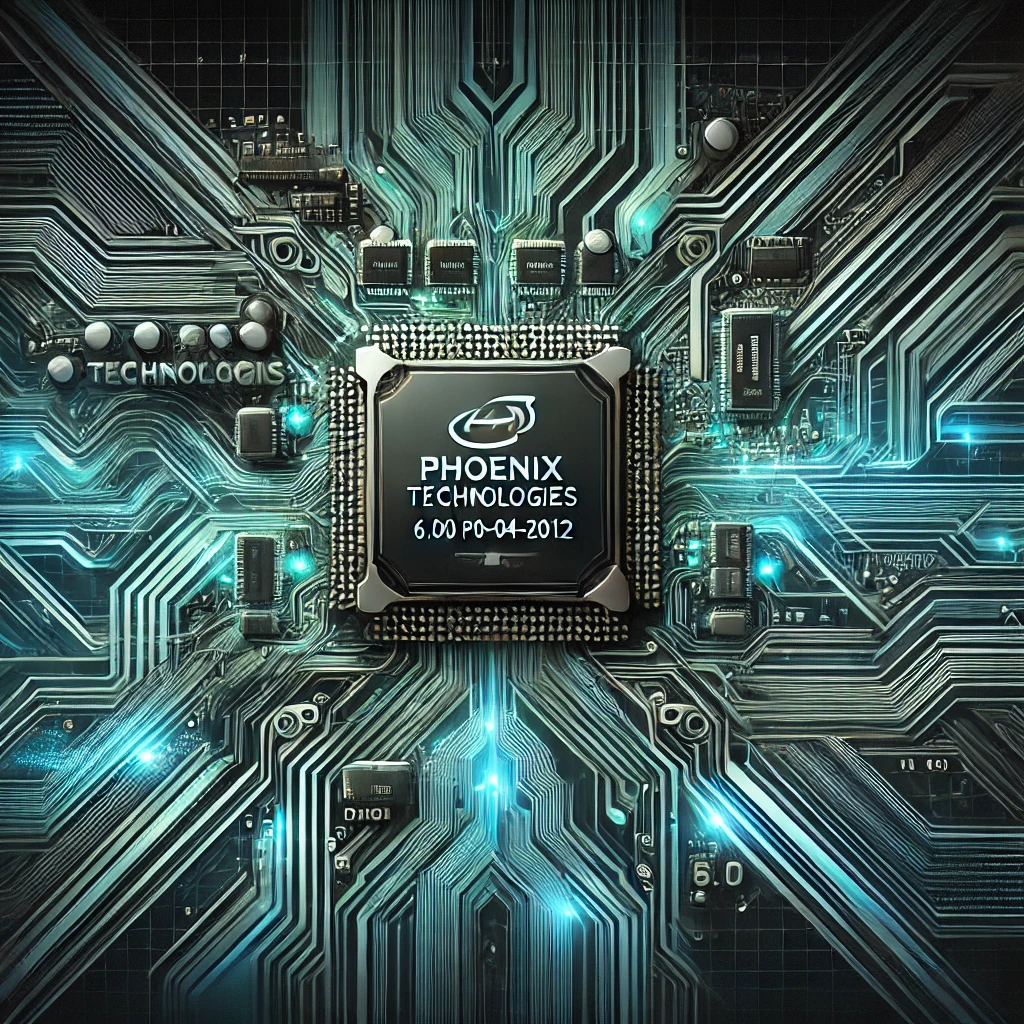
How to Identify Phoenix Technologies 6.00 10-04-2012 in Your System
Curious to know if your device uses Phoenix Technologies? Follow these steps:
- Access the BIOS: Restart your computer and press keys like F2, F10, or DEL during boot-up to enter the BIOS menu.
- Check Version Information: Look for details about the BIOS version, which are typically displayed on the main menu.
- Cross-Reference: If you find the label “Phoenix Technologies 6.00 10-04-2012,” congratulations—you’re working with a legendary piece of firmware.
Challenges and Workarounds
Despite its strengths, systems running Phoenix Technologies 6.00 10-04-2012 may face challenges when interacting with modern software or peripherals. Here are some solutions:
- Firmware Updates: Check with Phoenix Technologies for newer updates or patches.
- Compatibility Layers: Use virtualization tools or compatibility layers to bridge gaps between legacy BIOS and contemporary software.
- Community Forums: Engage with forums and online communities where enthusiasts share tips and tools for optimizing legacy systems.
Modern-Day Relevance of Phoenix Technologies
The enduring appeal of Phoenix Technologies 6.00 10-04-2012 lies in its adaptability. While newer firmware solutions dominate the market, this BIOS remains relevant in scenarios where stability, legacy support, and cost-efficiency are paramount.
For professionals in industries like manufacturing, healthcare, or education, where upgrading entire systems is costly or impractical, Phoenix Technologies 6.00 10-04-2012 continues to deliver.
Conclusion
Phoenix Technologies 6.00 10-04-2012 isn’t just a BIOS version—it’s a symbol of innovation that transcends time. By balancing legacy support with forward-looking features, it has cemented its place in the history of computing.
Whether you’re an IT professional managing legacy infrastructure or a tech enthusiast exploring the roots of modern computing, Phoenix Technologies 6.00 10-04-2012 offers valuable insights into the evolution of technology. Its story serves as a reminder that some innovations, no matter how old, remain essential and impactful.
Let us continue to appreciate the timeless significance of Phoenix Technologies 6.00 10-04-2012 as a cornerstone of computing history.
FAQ: All About Phoenix Technologies 6.00 10-04-2012
1. What is Phoenix Technologies 6.00 10-04-2012?
Phoenix Technologies is a specific version of the BIOS (Basic Input/Output System) software developed by Phoenix Technologies. Released on October 4, 2012, it was designed to provide enhanced compatibility, faster boot times, legacy support, and improved security for a variety of computing systems.
2. Why is the BIOS important in a computer system?
The BIOS is the foundation of a computer’s operation. It initializes hardware components during startup, ensures compatibility between the hardware and operating system, and allows users to configure system settings. Phoenix Technologies 6.00 10-04-2012 played a pivotal role in optimizing these processes for both legacy and modern systems.
3. What made Phoenix Technologies unique?
This version stood out due to its:
- Wide compatibility with diverse hardware.
- Significant reduction in boot times.
- Comprehensive legacy hardware support.
- Advanced firmware-level security measures.
- Energy-efficient power management features.
4. Can I still use Phoenix Technologies 6.00 10-04-2012 today?
Yes, many systems still use Phoenix Technologies 6.00 10-04-2012, especially in industrial, medical, and research fields where legacy hardware remains in operation. While it may face compatibility challenges with modern software, tools like emulators or system upgrades can extend its usability.
5. How can I check if my system has Phoenix Technologies?
Follow these steps:
- Restart your computer and enter the BIOS setup (usually by pressing keys like F2, F10, or DEL during startup).
- Look for BIOS version details in the main menu.
- If it shows “Phoenix Technologies 6.00 10-04-2012,” that’s the version your system is using.
6. What kind of systems relied on Phoenix Technologies?
This BIOS version was used in a wide range of systems, including:
- Consumer desktops and laptops.
- Enterprise servers and workstations.
- Specialized hardware in industrial automation, healthcare, and research.
Its versatility made it a favorite among manufacturers and IT professionals.
7. What are the security features of Phoenix Technologies?
Security was a key focus of this BIOS version. It introduced firmware-level protections to prevent unauthorized access and safeguard against boot-level vulnerabilities. This made it particularly valuable for enterprise environments where security is paramount.
8. Why is legacy support important in BIOS like Phoenix Technologies?
Legacy support ensures that older hardware and software can still function effectively, even as technology advances. This is crucial for businesses and industries that rely on long-lasting hardware, where replacing systems can be expensive or impractical. Phoenix Technologies 6.00 10-04-2012 excelled in maintaining this support.
9. How does Phoenix Technologies improve boot times?
The BIOS includes optimizations in its code and bootloader processes, enabling faster initialization of hardware and quicker loading of the operating system. This results in reduced wait times during startup, a feature appreciated by both casual users and professionals.
10. Is Phoenix Technologies 6.00 10-04-2012 compatible with SSDs?
Yes, Phoenix Technologies 6.00 10-04-2012 was designed to support emerging technologies like solid-state drives (SSDs), ensuring faster read/write speeds and improved overall system performance.
11. Can Phoenix Technologies 6.00 10-04-2012 be updated?
Yes, in some cases, manufacturers or Phoenix Technologies may provide updates or patches to enhance functionality or address vulnerabilities. It’s recommended to check with the manufacturer of your motherboard or system for available updates.
12. What are the power management features of Phoenix Technologies?
This BIOS version introduced advanced power management protocols, optimizing energy consumption and prolonging hardware lifespan. It was particularly beneficial for mobile devices and systems running 24/7.
13. What industries benefit most from Phoenix Technologies 6.00 10-04-2012?
Industries relying on stability and longevity of systems, such as:
- Manufacturing and industrial automation.
- Healthcare devices and medical research.
- Educational and research institutions.
- Enterprise IT infrastructure.
These fields often use legacy systems that require reliable BIOS solutions like Phoenix Technologies 6.00 10-04-2012.
14. Are there any challenges with Phoenix Technologies 6.00 10-04-2012?
While robust, it may face issues like:
- Incompatibility with modern hardware or software.
- Lack of updates for evolving cybersecurity threats.
These can often be mitigated with emulators, virtualization, or manual configuration adjustments.
15. What makes Phoenix Technologies 6.00 10-04-2012 still relevant today?
Its robust legacy support, reliability, and adaptability ensure its continued use in specialized applications. Even as newer firmware solutions emerge, Phoenix Technologies 6.00 10-04-2012 remains a cornerstone in environments where stability is more critical than cutting-edge features.
16. Can I migrate to a newer BIOS from Phoenix Technologies 6.00 10-04-2012?
Yes, but the feasibility depends on your hardware and the availability of updated BIOS versions from your system manufacturer. Migrating to newer firmware may improve compatibility with modern technologies but could result in the loss of legacy support.
17. How does Phoenix Technologies 6.00 10-04-2012 compare to modern UEFI firmware?
While Phoenix Technologies 6.00 10-04-2012 excels in legacy support and simplicity, UEFI (Unified Extensible Firmware Interface) offers advanced features like graphical interfaces, larger drive support, and faster boot times for modern systems. However, for legacy hardware, Phoenix Technologies 6.00 10-04-2012 remains a preferred choice.
18. Is it safe to modify settings in the BIOS?
Yes, but proceed with caution. The BIOS contains critical system settings, and improper changes can affect system stability. If you’re unsure, consult your system manual or seek professional assistance.
19. Can I reinstall Phoenix Technologies 6.00 10-04-2012 if it’s corrupted?
Yes, but it requires a BIOS recovery tool or a specialized process to reflash the firmware. This should only be attempted by experienced users or technicians.
20. Why is Phoenix Technologies 6.00 10-04-2012 a landmark in BIOS history?
This BIOS version embodies the balance between legacy and modern computing. Its ability to serve diverse systems, offer security enhancements, and remain relevant for over a decade makes it a standout achievement in firmware technology.
This FAQ aims to cover everything you need to know about Phoenix Technologies 6.00 10-04-2012, offering insights into its features, relevance, and practical applications. Whether you’re a tech enthusiast or a professional working with legacy systems, understanding this BIOS version is essential.

